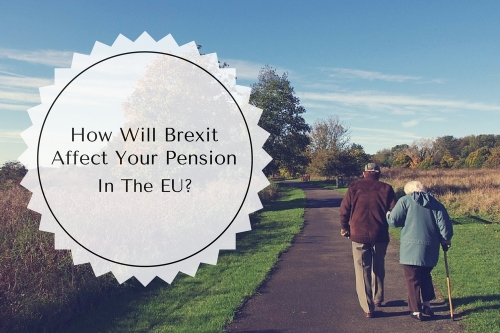by Nigel Nelson
Today there are over half a million UK state pensioners living overseas who do not receive an annual increase to their UK state pension. Since the pension payment is never increased, it is known as the “frozen” pension policy. What has this got to do with UK pensioners living in the European Union (EU), you may ask? The answer is six letters -> b-r-e-x-i-t.With Brexit the UK has voted to leave the EU and this may have a seismic impact on UK state pensioners residing permanently in the EU – 472,000 of them living mainly in Spain, France, Cyprus and Portugal. The UK state pension is based entirely and solely on a person’s National Insurance Contribution (NICs) record. However, the annual increase is based on a different set of rules altogether, and the UK government only pays the annual increase where they are legally obliged to pay it. Currently an overseas UK state pensioner only receives the increase if they live in the EEA (which is the EU plus Norway, Iceland, and Liechtenstein), or a handful of disparate countries such as the USA and Jamaica. Just like the “frozen” pensioners living in Canada, UK state pensioners living in the EU may no longer receive the annual increase to their state pension, as the UK government will no longer be legally obliged to pay it once the UK is no longer a member of the EU.
David Morris, the Chairperson for not-for-profit organisation the Canadian Alliance of British Pensioners (CABP), recently commented: ‘For us, the emphasis is on Alliance rather than Canadian – it is our goal to remove the “frozen” pension policy once and for all, thereby helping all overseas state pensioners. We encourage every UK pensioner living [in] an EU country to join us in this battle’.
There are many stories from UK pensioners who have lived in “frozen” countries for a number of years. One octogenarian moved to Canada in 1983 and then retired in 1998. When he first retired, his UK state pension was £65 per week, which converted to C$150. Eighteen years later he is still getting £65 per week, but due to a significant drop in the exchange rate over the years he is only getting C$110 now – C$40 less than he was getting in 1998! During this time inflation has been an average of nearly 2%/year, and for every C$100 spent in 1998 you would now have to spend C$140. The octogenarian has lost significantly in his purchasing power!
There are heart breaking stories as well – one 90-year-old UK pensioner, who moved to Canada many years ago, is now living on the breadline. She says: “It’s the small things, and the injustice, that is really getting to me. I value my independence, but I can’t go on living on the breadline and I don’t want to inflict this on my family. As well as ever-increasing poverty, I feel a sense of stress and shame, which is affecting my health. This is complete and utter discrimination. I have paid all my contributions to the National Insurance Fund in Britain and now I have no option but to return to get something back”.
On the CABP website you will learn all you need to know about overseas UK state pensions. Brexit updates are also being posted frequently. You may want to even bookmark the website! Every member adds another voice to this hard-working lobby group, which is striving to effect a change to the illogical “frozen” pension policy.
Nigel Nelson is a member of the Canadian Alliance of British Pensioners, and a Director of the International Consortium of British Pensioners and he can be contacted at nigel@britishpensions.com

